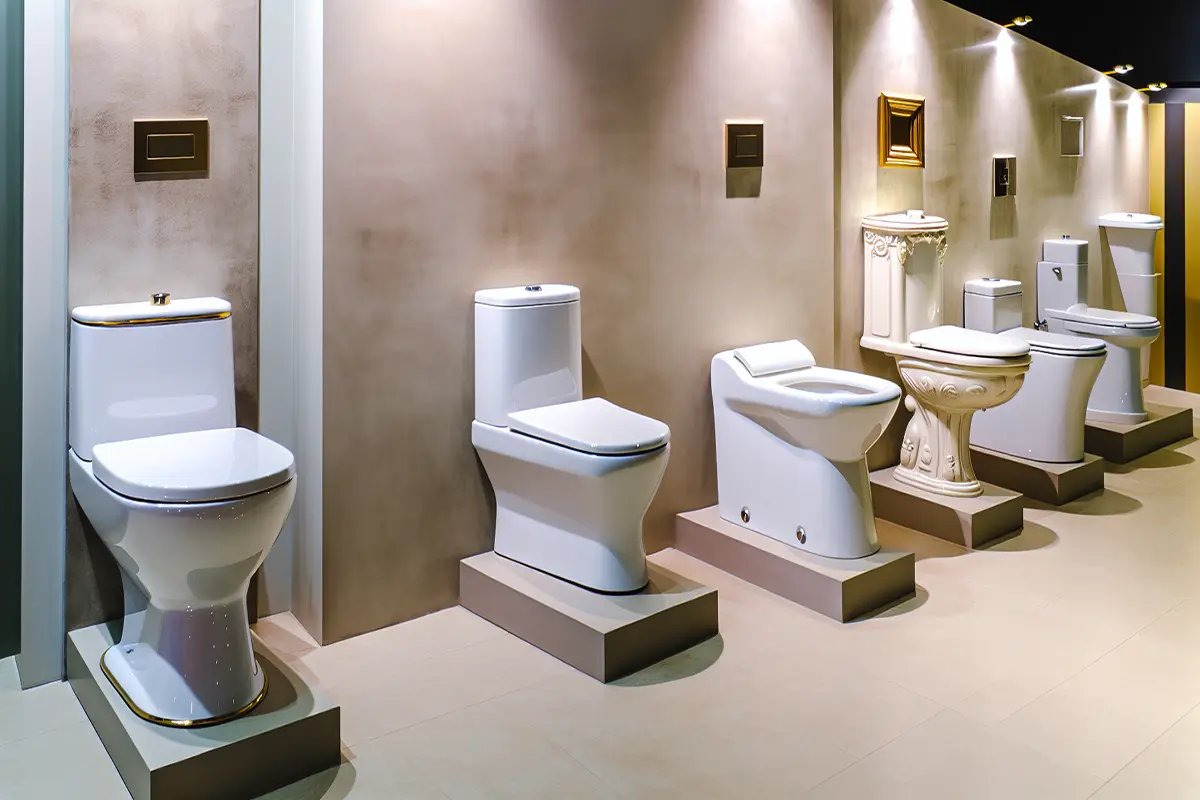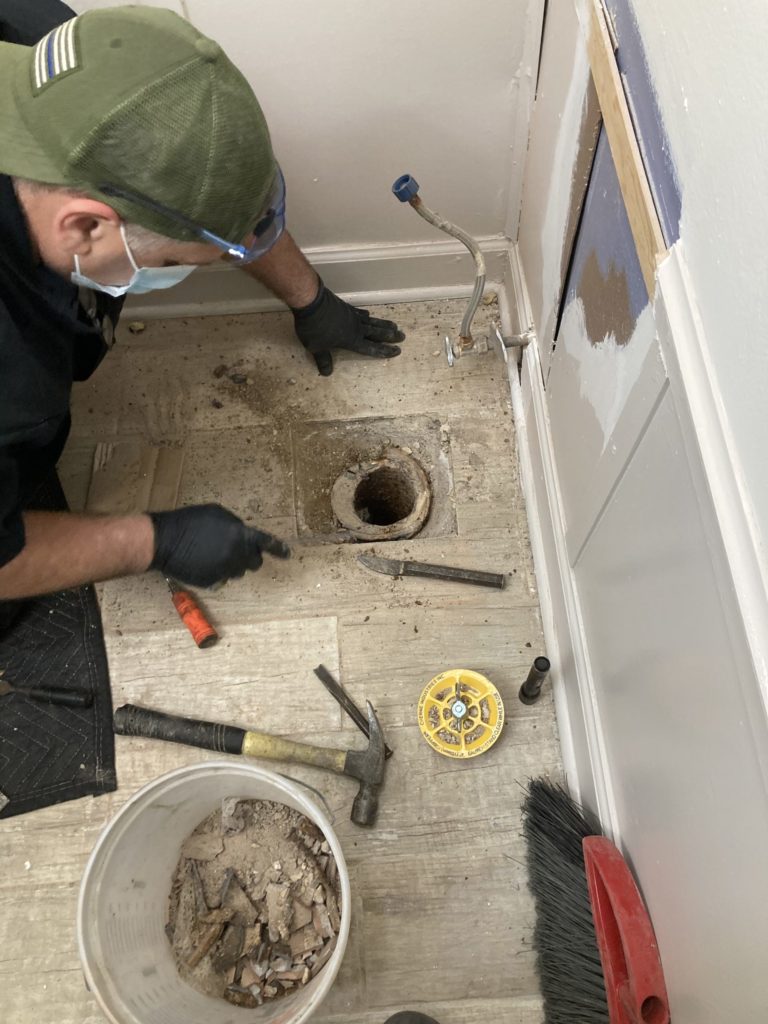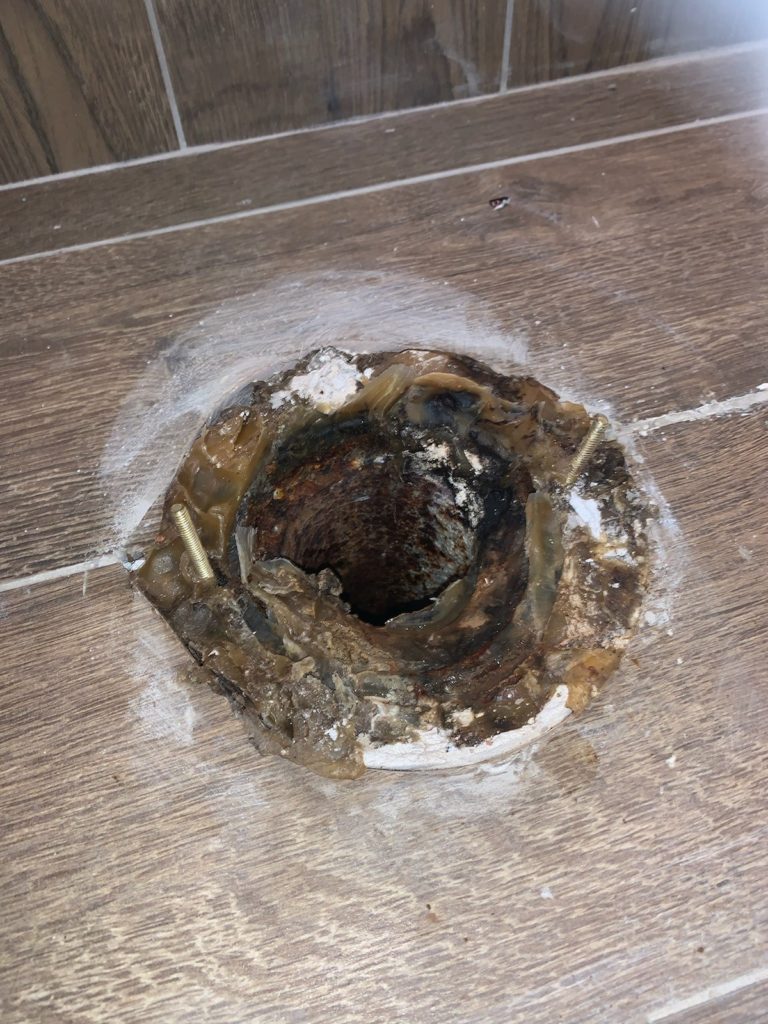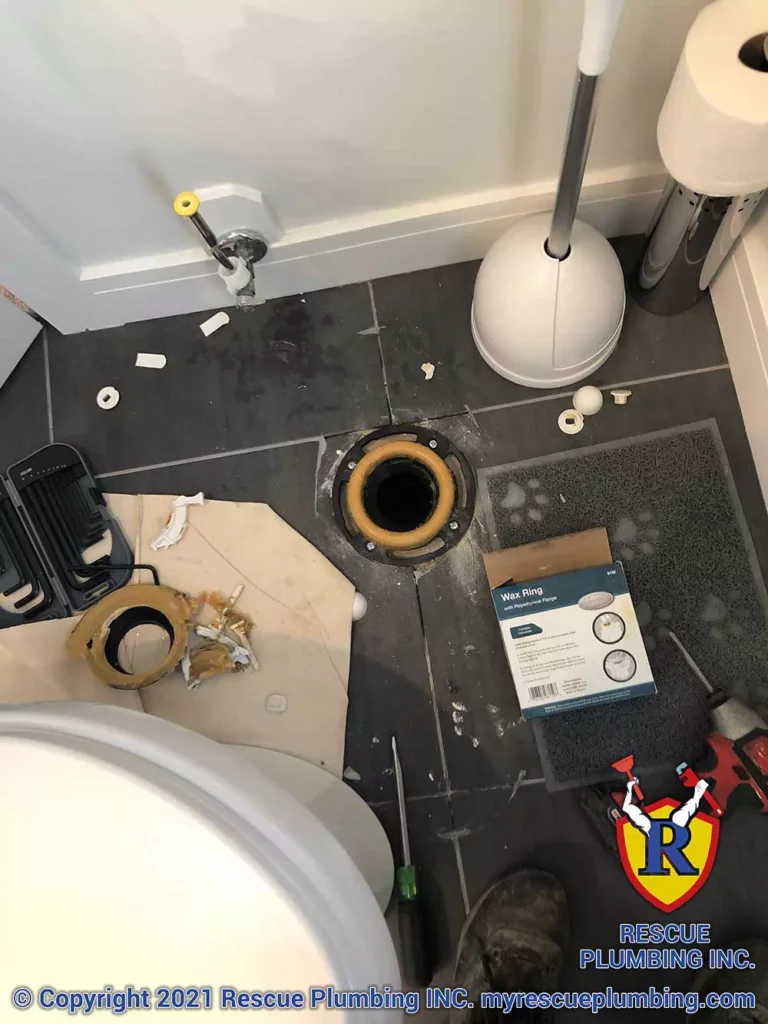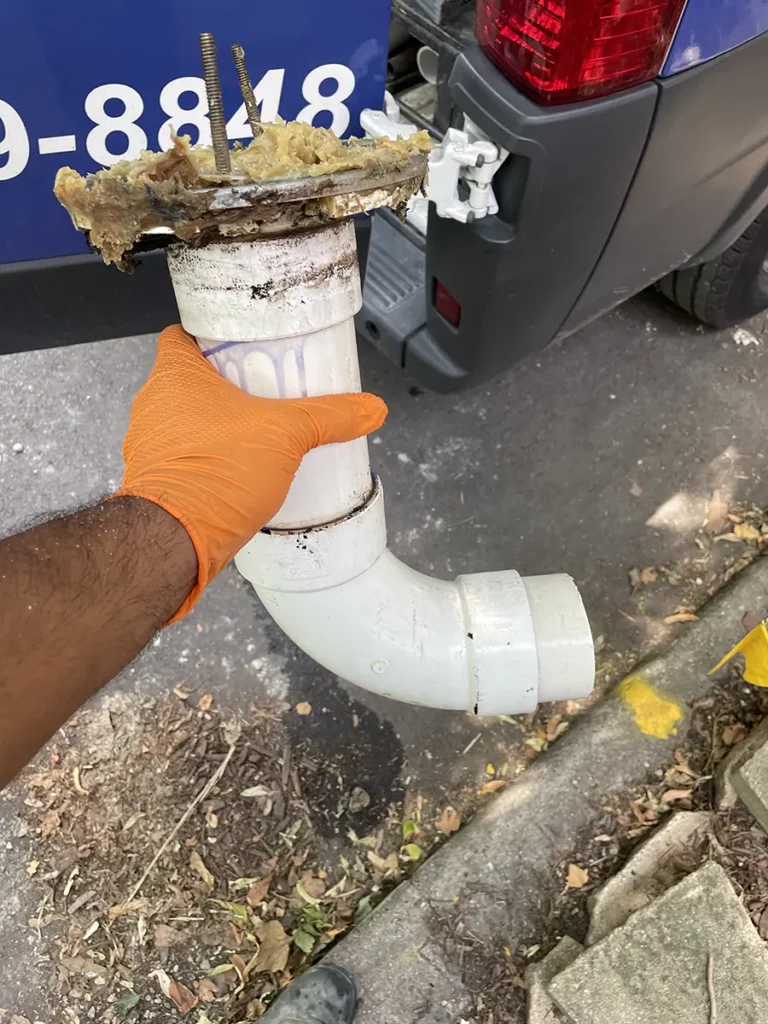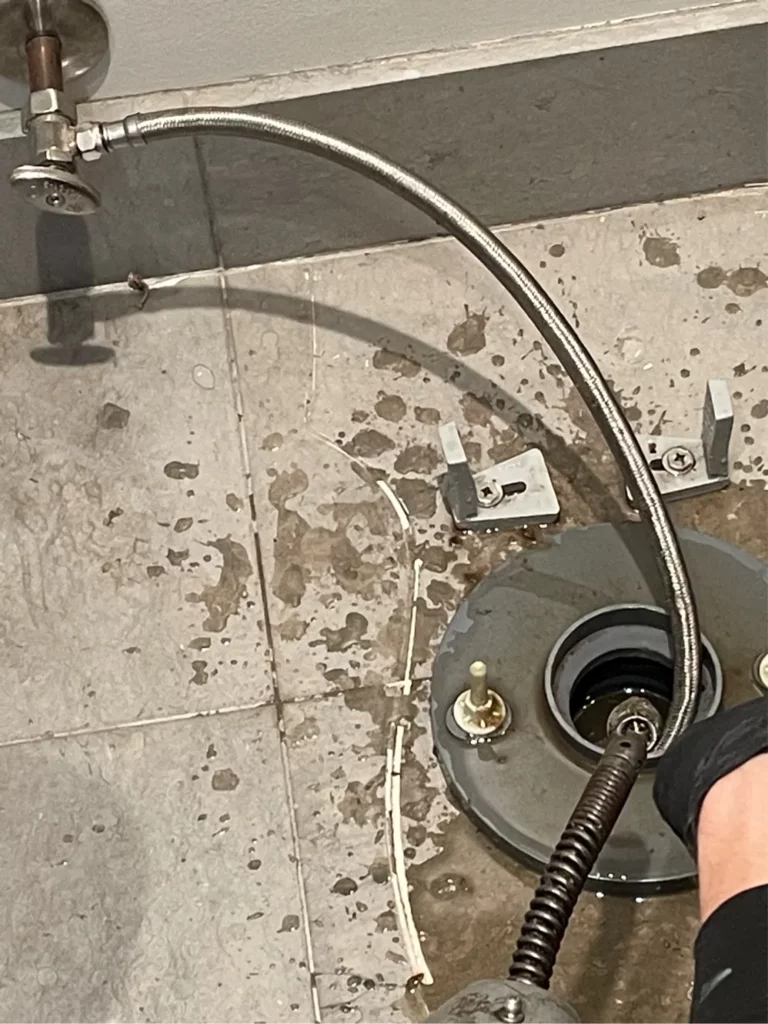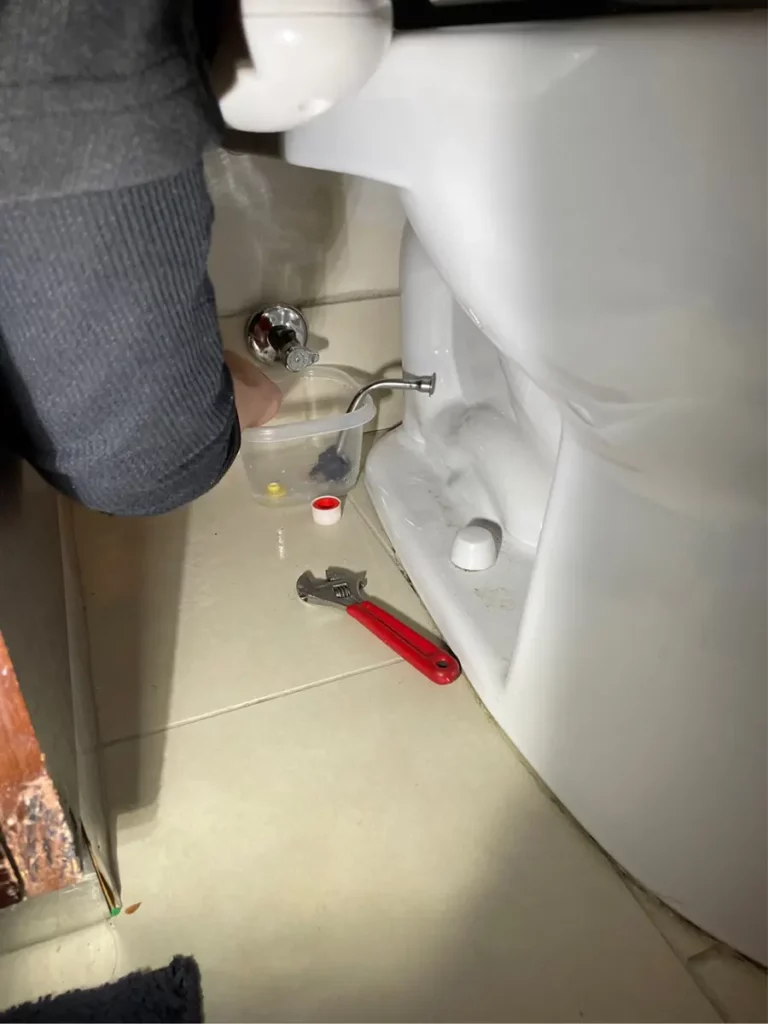5 Essential Tips for a Perfect Toilet Installation
Starting a toilet installation can be daunting, but with the right guidance, it doesn’t have to be. This comprehensive guide will navigate you through the swirling waters of toilet installation and things to consider before upgrading your royal throne.
Key Takeaways
- To install a toilet that’s right for you, taking accurate measurements and selecting the right bowl shape and toilet height are vital to ensure comfort, fit, and compatibility with your plumbing system.
- Advanced features such as pressure assist toilets and bidet seats offer benefits like water efficiency, reduced maintenance, and enhanced cleanliness.
- Choosing the appropriate toilet involves considering aesthetics along with your bathroom’s dimensions, type preferences, features, and style.
Choosing the Ideal Toilet for Your Bathroom
Selecting the ideal toilet for your bathroom involves more than just aesthetics. It involves a deep understanding of your bathroom’s specific dimensions and plumbing system. Before you start looking for a new toilet, you should carefully consider the size and type that will best suit your bathroom.
The market is flooded with various toilet types, from one-piece and two-piece models to wall-hung variations.
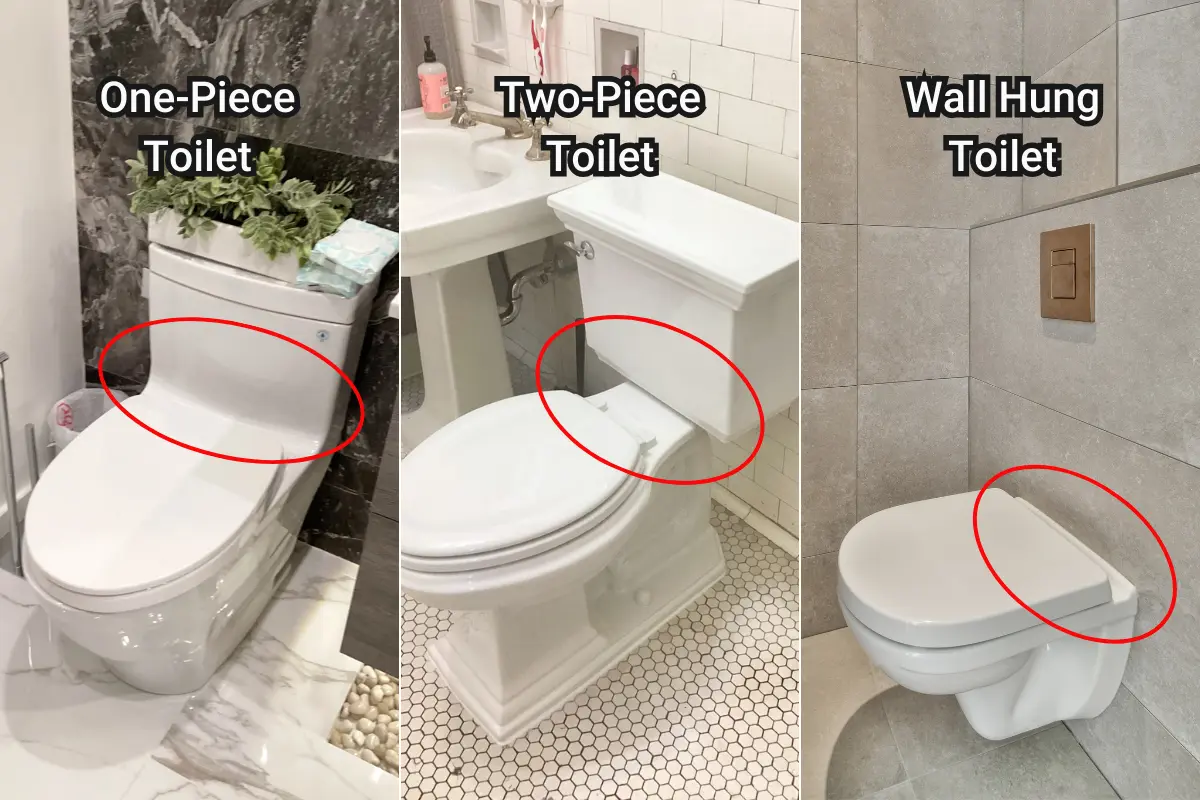
A one-piece toilet combines the tank and bowl in a seamless design, a two-piece toilet features a separate tank and bowl for a more traditional look, and a wall-hung toilet mounts directly to the wall, freeing up floor space and simplifying cleaning.
Most toilets may seem similar at first glance, but their installation labor costs, features, and styles can vary significantly. That’s why understanding the various types and how they fit into your bathroom’s design and personal preferences is crucial, especially when considering toilet installation costs.
Your new toilet should not only replace your old toilet but enhance your bathroom’s aesthetics and functionality.
Tip 1: Measuring for a Perfect Fit
An integral part of a successful toilet installation is accurate measurement. To measure for a perfect installation, you must take rough-in-size measurements of the toilet. The rough-in size is the measurement from the wall to the toilet bolts holding the toilet to the floor.
This measurement determines the compatibility of the toilet with the existing plumbing. It’s typically 12 inches but can also be 10 or 14 inches depending on the bathroom’s design.
To measure the rough-in size, follow these step-by-step instructions:
- Start from the drywall behind the toilet.
- Extend the tape measure to the center of the closet bolts or the closet bend in the drainpipe.
- Ensure the accuracy of this measurement, as the precise distance from the drywall to the center of the toilet bolts is crucial for an appropriate fit.
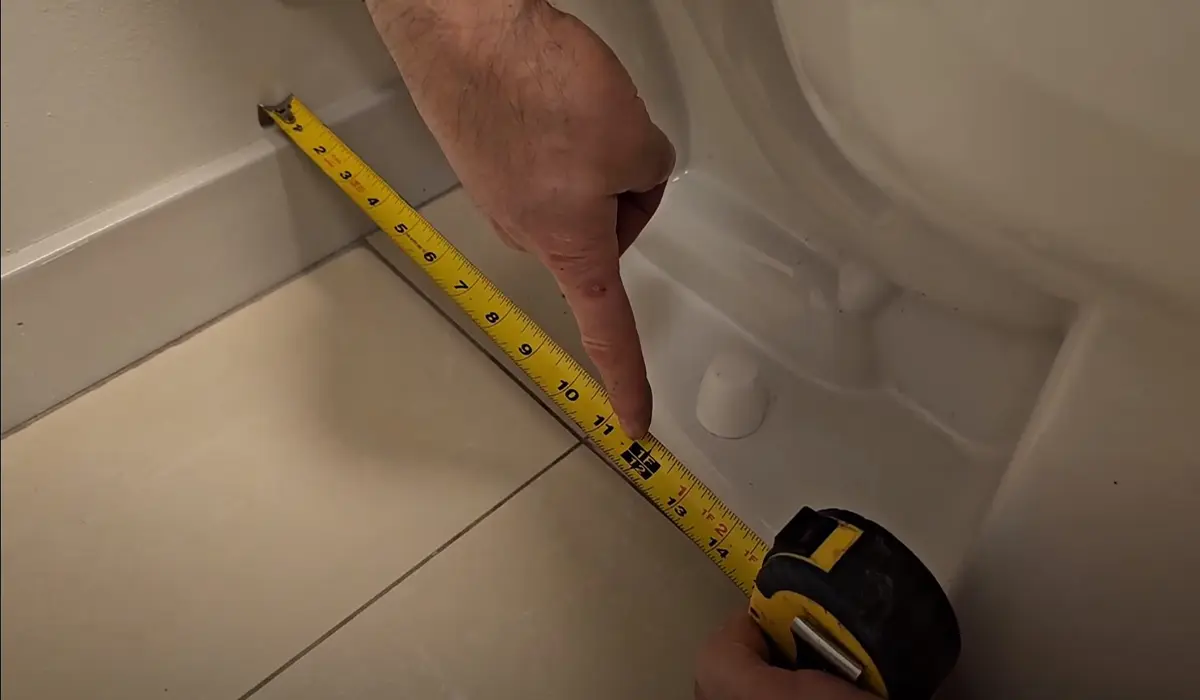
Don’t make the rookie mistake of measuring from the trim plate or floorboard as this can result in an incorrect fit. The standard size is 12 inches, but if you’re an inch off, don’t panic. There’s an inch of wiggle room for rough-in sizes measuring out to odd numbers like 11 or 13 inches.
A precise measurement of the rough-in size is vital to ensure a perfect fit for your new toilet and its compatibility with your existing bathroom plumbing. This step cannot be overlooked if you desire a seamless and efficient toilet installation.
Tip 2: Selecting the Right Bowl Shape
The shape of the toilet bowl is another factor to consider when selecting the perfect toilet. Toilet bowls typically come in two shapes: round and elongated. Your choice between these two options will depend largely on the size of your bathroom and your comfort preferences.
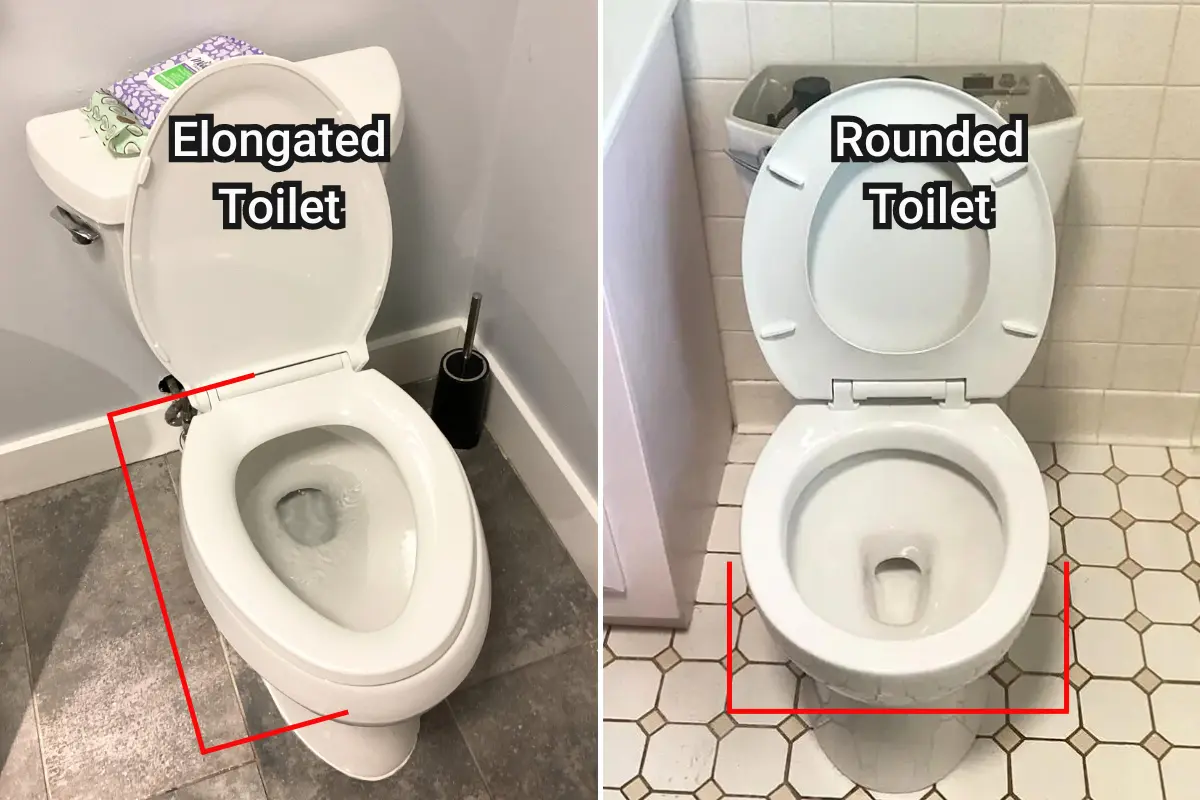
Round toilet bowls, known for their space efficiency, are an ideal choice for smaller bathrooms or powder rooms. Their compact dimensions make them a popular choice for smaller bathrooms.
On the other hand, elongated toilet bowls offer more comfort and are considered more hygienic due to their larger surface area. Although they offer more comfort, they can be an obstruction in small bathrooms, potentially blocking the bathroom entry door.
If you’re okay with a door that doesn’t fully close, then by all means, embrace the elongated life! For those in bustling cities like Chicago, where bathrooms are more like closets, sticking with round might be your best bet.
Make sure to weigh these factors carefully before making your decision!
Tip 3: Comfort Height vs. Standard Height Toilets
Height is an often-overlooked factor when selecting a toilet, but it plays a significant role in ensuring comfort and accessibility. Toilets typically come in two heights: comfort height (also known as ‘right height’) and standard height.
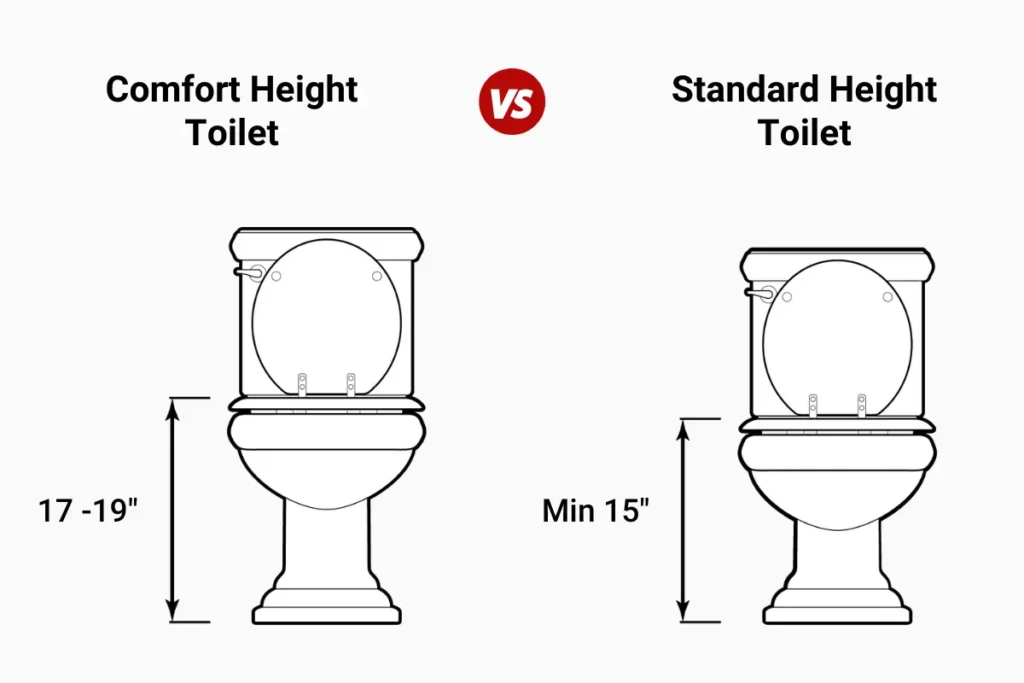
Comfort height toilet seats typically range between 17 and 19 inches high, whereas standard toilets usually have a height of at least 15 inches. The Americans with Disabilities Act (ADA) requires toilets to have a minimum seat height of 17 inches to be ADA-compliant, which corresponds to the range of comfort height toilets. If you’re a commercial space looking for a toilet upgrade, you must follow the ADA.
For homeowners, the physical height of the potential users should influence the decision between comfort height and standard height. While taller individuals over 5’4” may prefer comfort height toilets because they make it easier to sit down and stand up, tall seats can cause discomfort for vertically challenged folks whose feet are unable to touch the ground when using a comfort height toilet.
In homes with individuals of varying heights, installing toilets of different heights might be necessary to accommodate everyone comfortably on a tile floor.
Tip 4: The Benefits of Pressure Assist Toilets
If you want a toilet with the force of a thousand waterfalls when you gently press the handle, consider a pressure assist model. These are great for long sewage journeys in large buildings, but they might be overkill for a home setup.
Pressure assist toilets have a reputation for effectively clearing waste with a single flush. Thanks to their pressurized flush mechanism, these toilets are less prone to clogging, which translates into less maintenance and fewer emergency plumbing services.
Beyond water conservation and reduced clogging, pressure assist toilets also promote bowl cleanliness. The stronger flush generated by these toilets helps maintain cleanliness, making them particularly beneficial in environments with high usage, like office or industrial settings.
However, this model is only recommended for a location where pipes don’t have enough gravity to push sewage to the sewage pit. Pressure assist toilets also come with a higher price tag than a regular toilet because of their powerful mechanisms like pressurized air tanks, but this product is still something to consider when analyzing your plumbing system.
Tip 5: Adding a Bidet Seat to Your New Toilet
Adding a bidet seat to your toilet installation plan can significantly enhance hygiene, comfort, and environmental conservation in your bathroom. Bidet seats provide a thorough cleaning with water and are considered more hygienic than toilet paper. Using a bidet can also reduce the spread of germs by minimizing hand contact with fecal matter, contributing to overall cleanliness and health.
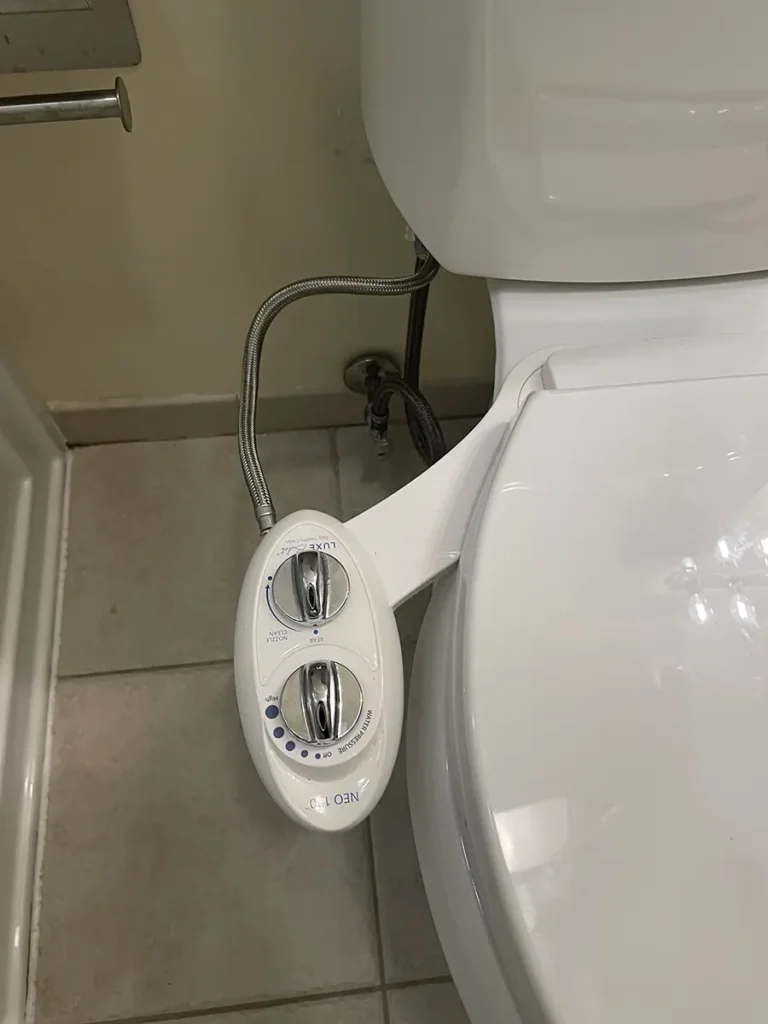
Besides hygiene, bidets also contribute to:
- Reducing toilet paper usage and clogs, leading to significant money savings
- Adjustable water pressure and temperature control to cater to individual comfort
- Some even offer eco-friendly features like energy-saving modes to reduce electricity consumption
When you decide to install a bidet seat, you should verify its compatibility with your existing toilet and adhere to the manufacturer’s installation instructions. Although installing a bidet is not compliant with the Illinois Plumbing Code and can cause leaks, the decision to install one is for you to decide!
We advise against installing a bidet on your own as you could damage the water supply line. If you’d like one installed, schedule an appointment with Rescue Plumbing today and call our friendly staff at (773)-799-8848!
Finding Your Bathroom Aesthetic
We understand choosing the aesthetics of your bathroom toilet can be difficult. Choosing a one-piece toilet versus a two-piece toilet, wanting a skirted toilet, or even having a visible S Trap can be a lot to consider. That’s why we refer customers to our toilet supplier, Ferguson Plumbing Supply.

Their friendly team will walk you through their showrooms and guide you to your dream toilet. Once you decide which throne is right for you, Rescue Plumbing handles the rest including pickup and installation!
Your Throne Awaits
The process of installing a toilet involves a careful selection of the right toilet type, accurate measurement of the rough-in size, and thoughtful consideration of various factors such as bowl shape, height, flushing system, and additional features like pressure assist and bidet seats.
It’s crucial to ensure your toilet not only fits seamlessly into your bathroom but also enhances its aesthetics, functionality, and efficiency.
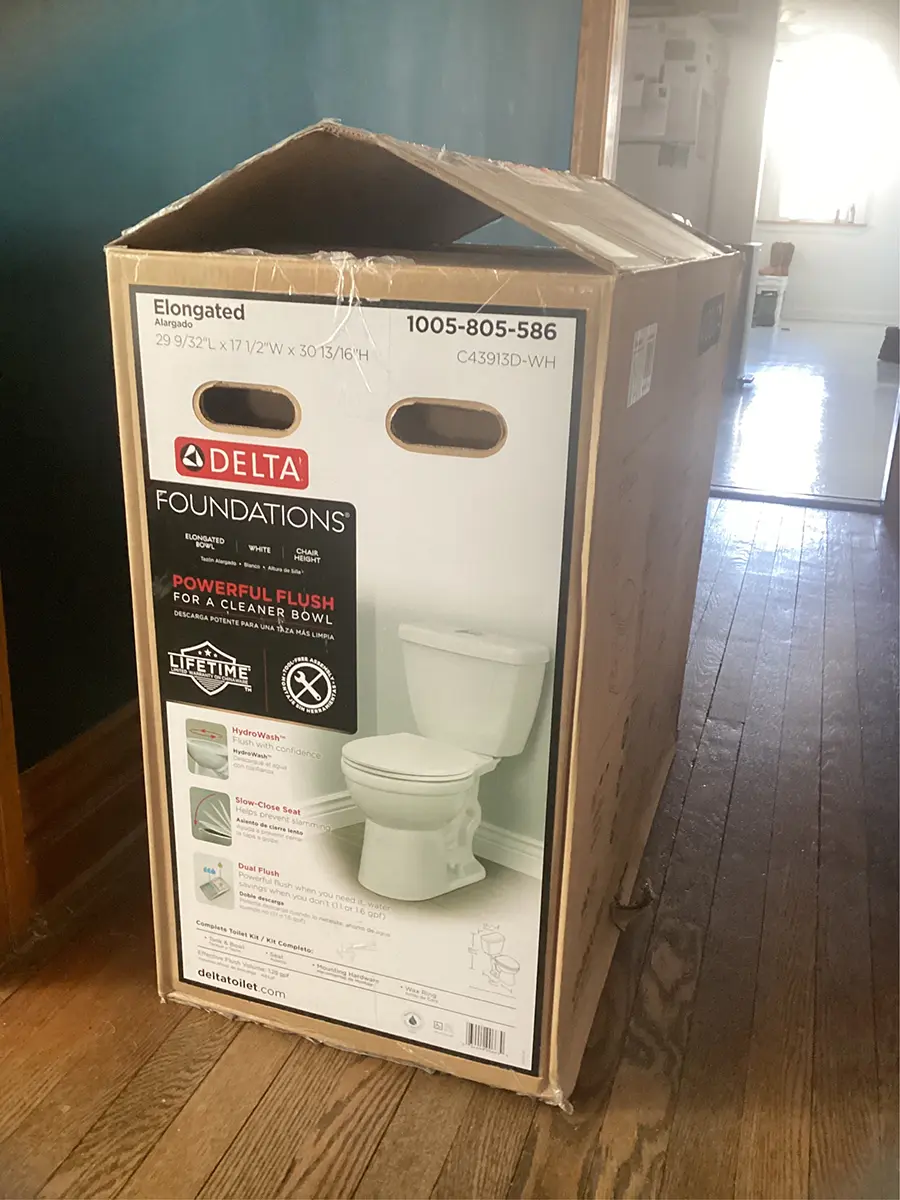
The journey of a perfect toilet installation is a meticulous one, but the payoff is a bathroom transformed into a sanctuary of comfort and functionality.
By following this guide, you can ensure a successful and hassle-free process to install a toilet. Happy flushing!
